Tom's Guide Verdict
The Vivoactive 3 is one of the best fitness-focused smartwatches available, but the Fitbit Ionic has music storage and the Apple Watch Series 3 has more apps.
Pros
- +
Always-on watch face
- +
Round design
- +
Advanced workout-tracking
Cons
- -
Garmin Pay supports few cards at launch
- -
Inaccurate sleep-tracking
- -
No onboard music storage
Why you can trust Tom's Guide
Garmin makes some of the best fitness trackers in varying shapes and sizes for athletes of all stripes. Runners, swimmers, golfers: No matter what form of exercise you prefer, Garmin probably has a device designed to track your activity.
But now the company is diversifying its lineup, with more-versatile smartwatches, such as the Vivoactive 3, which takes aim at both the Apple Watch Series 3 and Fitbit Ionic, with features such as apps, smartphone notifications and the ability to make purchases with the watch.
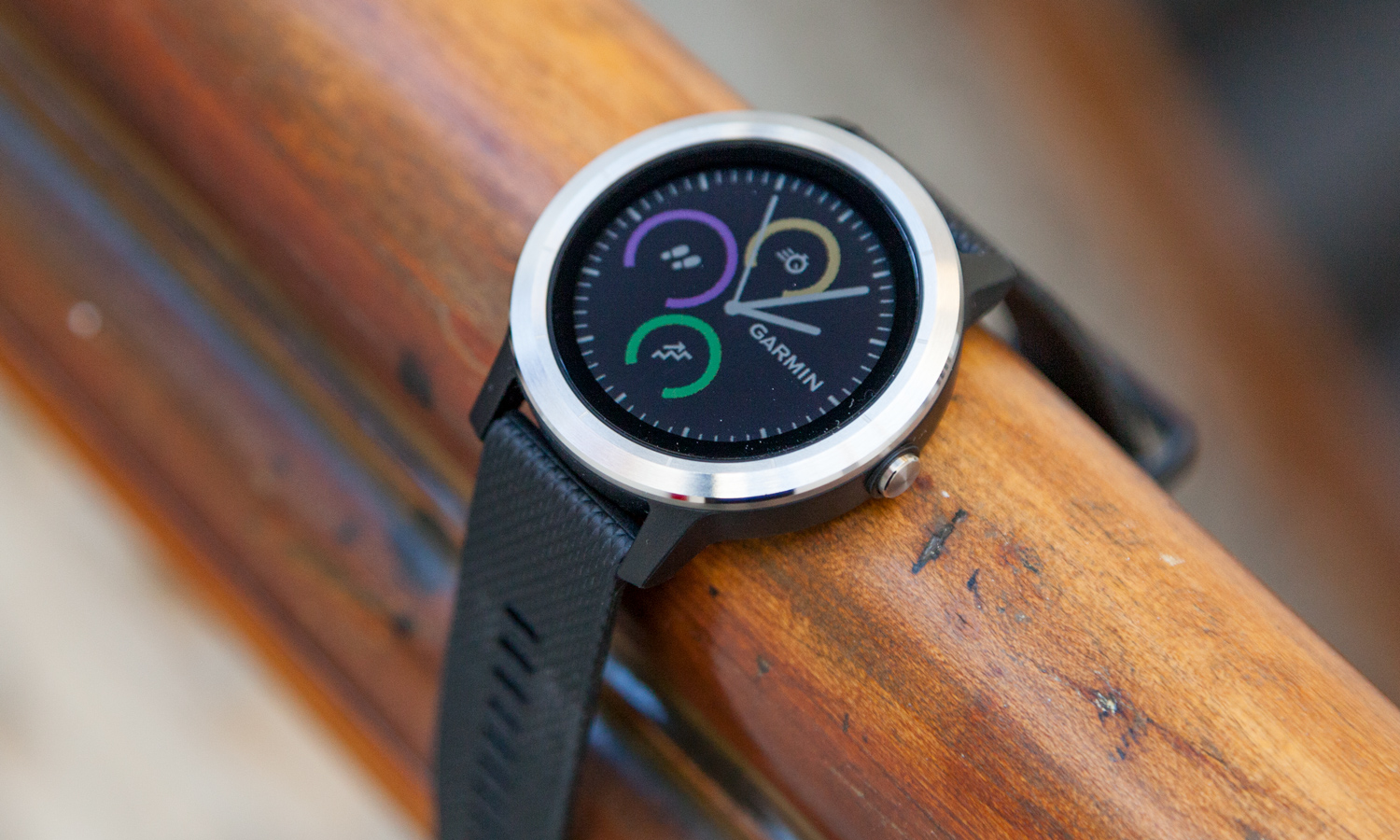
There's no doubt that Garmin handily beats both Apple and Fitbit when it comes to tracking exercise, making it the best smartwatch for fitness-tracking, but the Vivoactive 3 has a few drawbacks when you look beyond workouts.
Editor's note: Garmin's next-gen $349 Vivoactive 4 is now on sale. The smartwatch comes in two sizes and offers built-in music storage.
Fitness: Where Garmin shines
The Vivoactive 3 has built-in GPS and a heart rate sensor, which are becoming de rigueur for smartwatches these days. But Garmin has been outfitting its activity trackers with both of those features for years now, and the accuracy of the company's sensors is well-proved at this point. That holds true for the Vivoactive 3, although the differences between Garmin's devices and those of its rivals are shrinking.
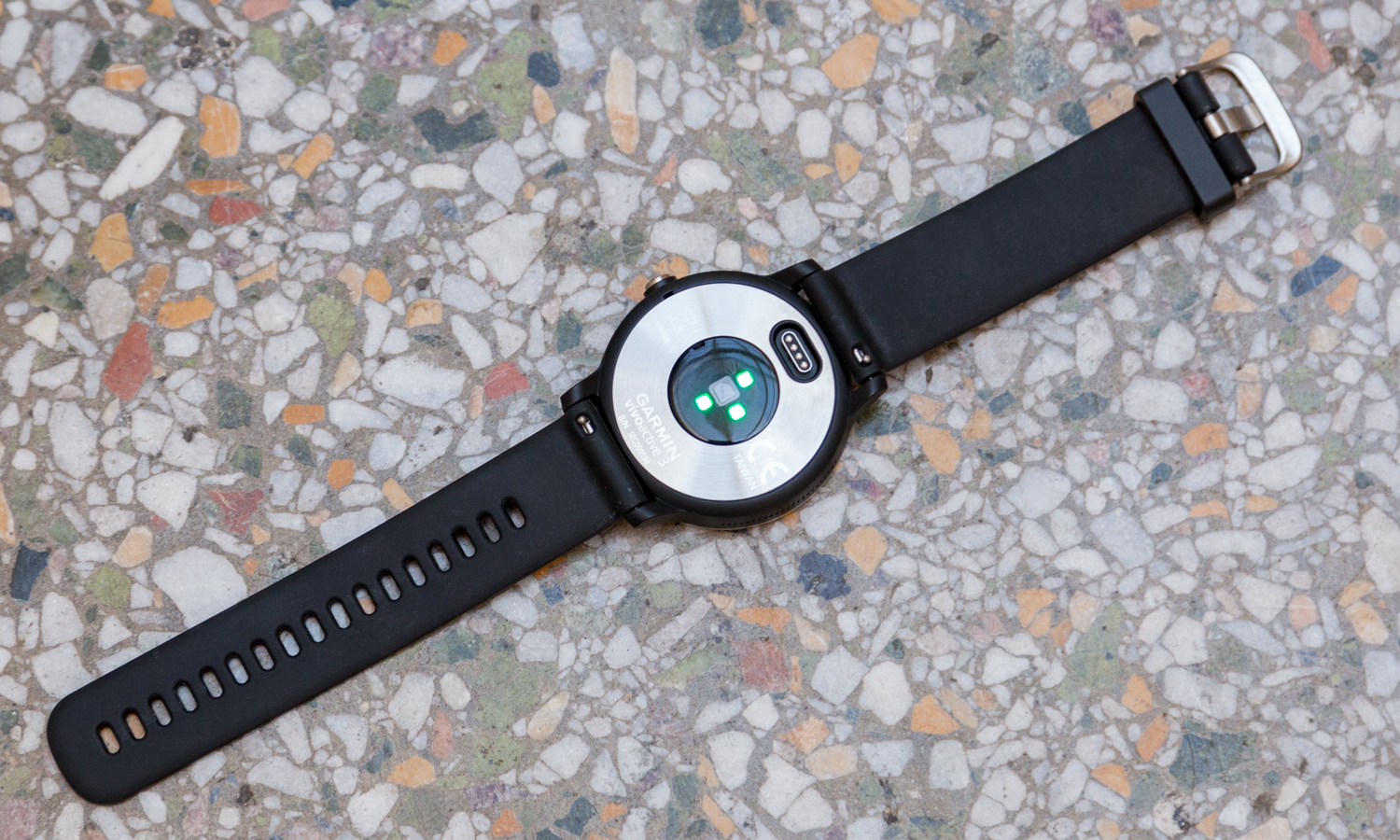
MORE: Best Smartwatch - Top-Rated Watches for iPhone, Android
I wore the device for three 3-mile runs and found that the Vivoactive 3 latches onto a GPS signal in less than a minute and accurately tracks heart rate during exercise. You launch a workout by pressing the watch's side button and choosing from a litany of activities (seriously, it seems like Garmin can track just about anything). You can also design your own workouts in the Garmin Connect smartphone app and then sync them to the watch.
Get instant access to breaking news, the hottest reviews, great deals and helpful tips.
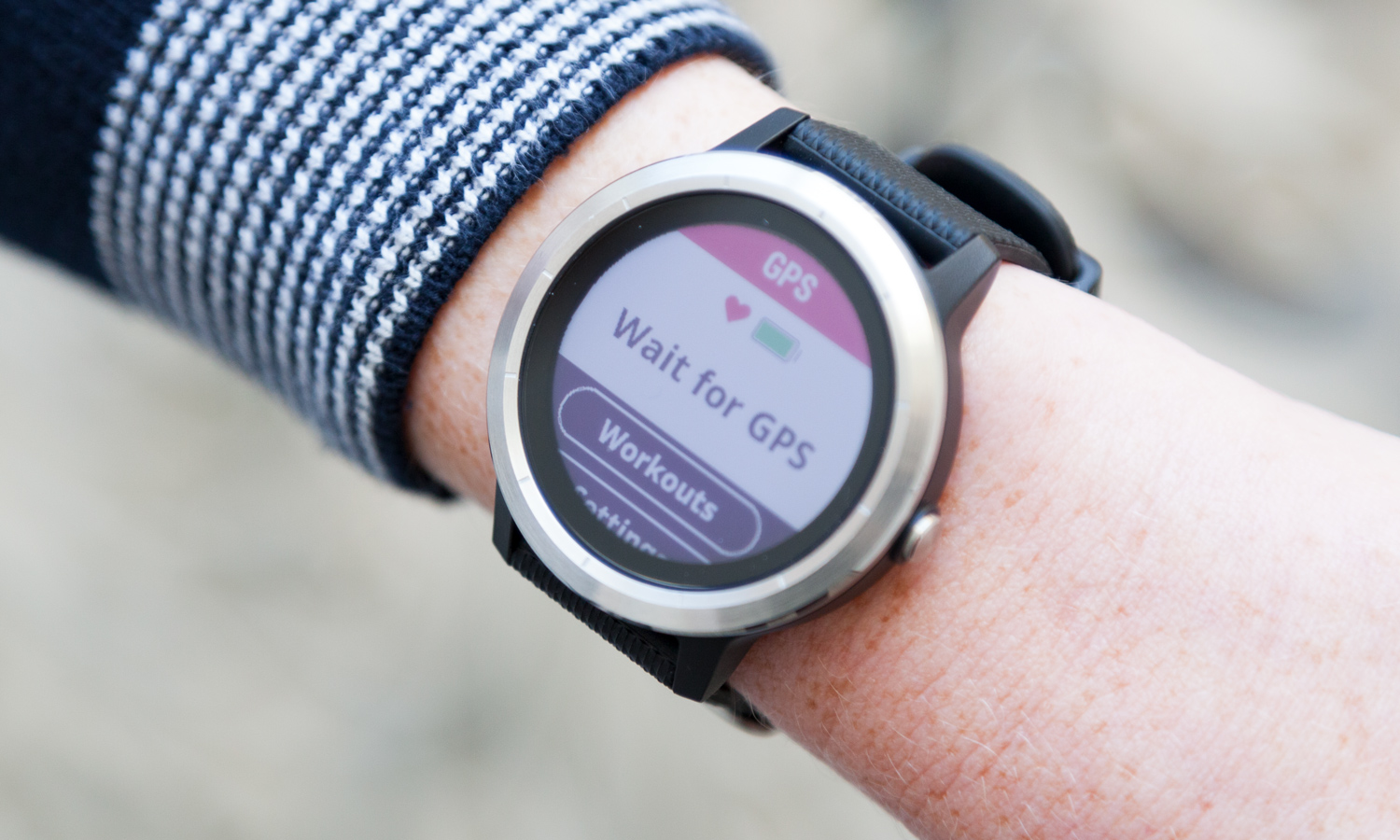
The Vivoactive 3's display is superbright and easy to see even when you're running outside. While you run, you can see stats like mileage, pace and heart rate. After syncing your workout to the Garmin Connect app, you'll see a map of your route.
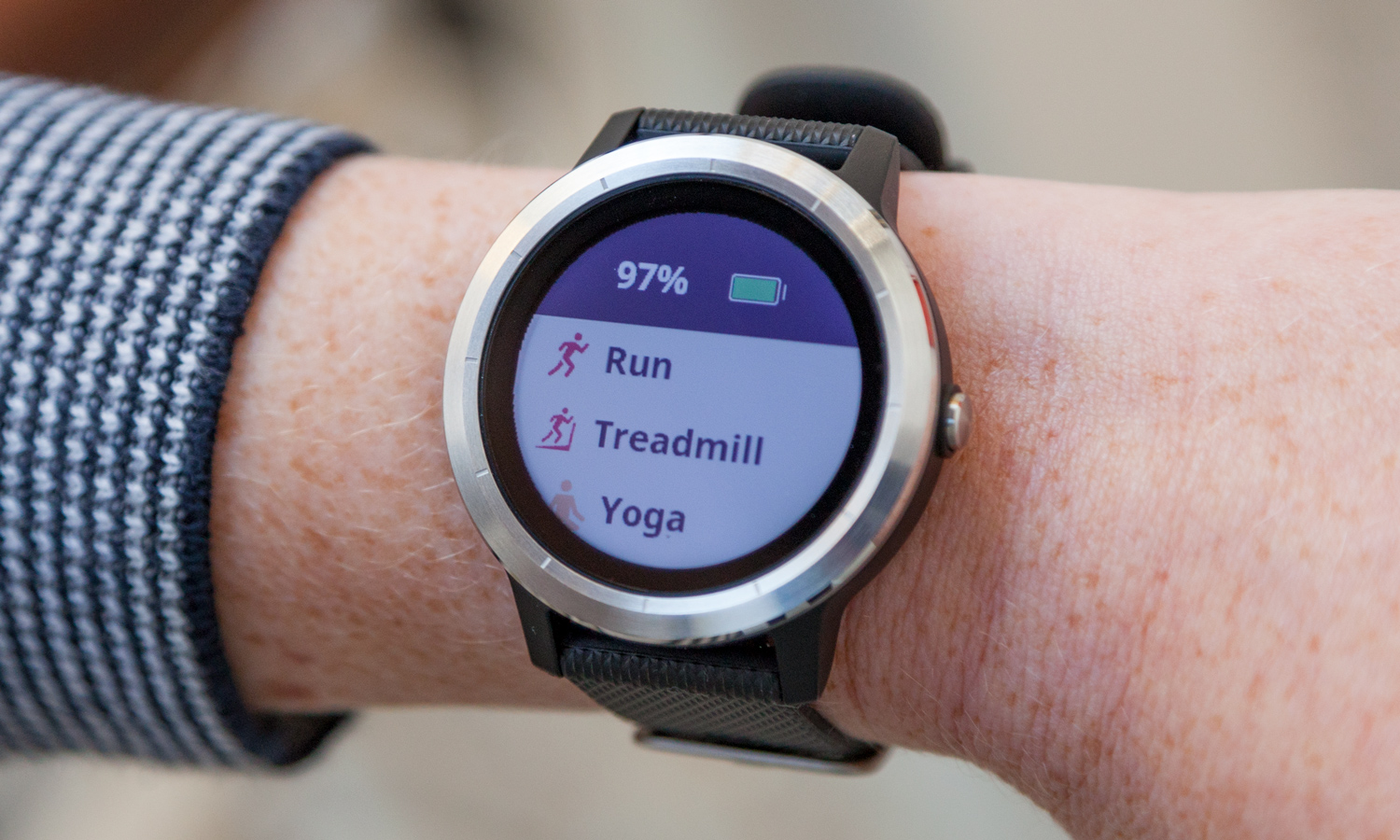
The Vivoactive 3 uses its heart rate sensor to measure your V02 max score, or what your fitness age is, and monitor your stress levels throughout the day. The Garmin Connect app stores public information from other Garmin users about popular courses and segments, and compares your data against them. I liked being able to see how quickly other runners conquered a difficult uphill stretch of a course I run regularly (although I'm a little peeved that they were much faster than me).
Design: Simple, round, easy to use
The Vivoactive 3 shares many features with its rivals, the Fitbit Ionic and Apple Watch Series 3. The Garmin device's interface relies on a combination of touch-screen controls and a side button or crown. For instance, viewing a smartphone notification requires tapping on the watch face, but pausing a workout happens with the press of a button. This was all easy enough to figure out.
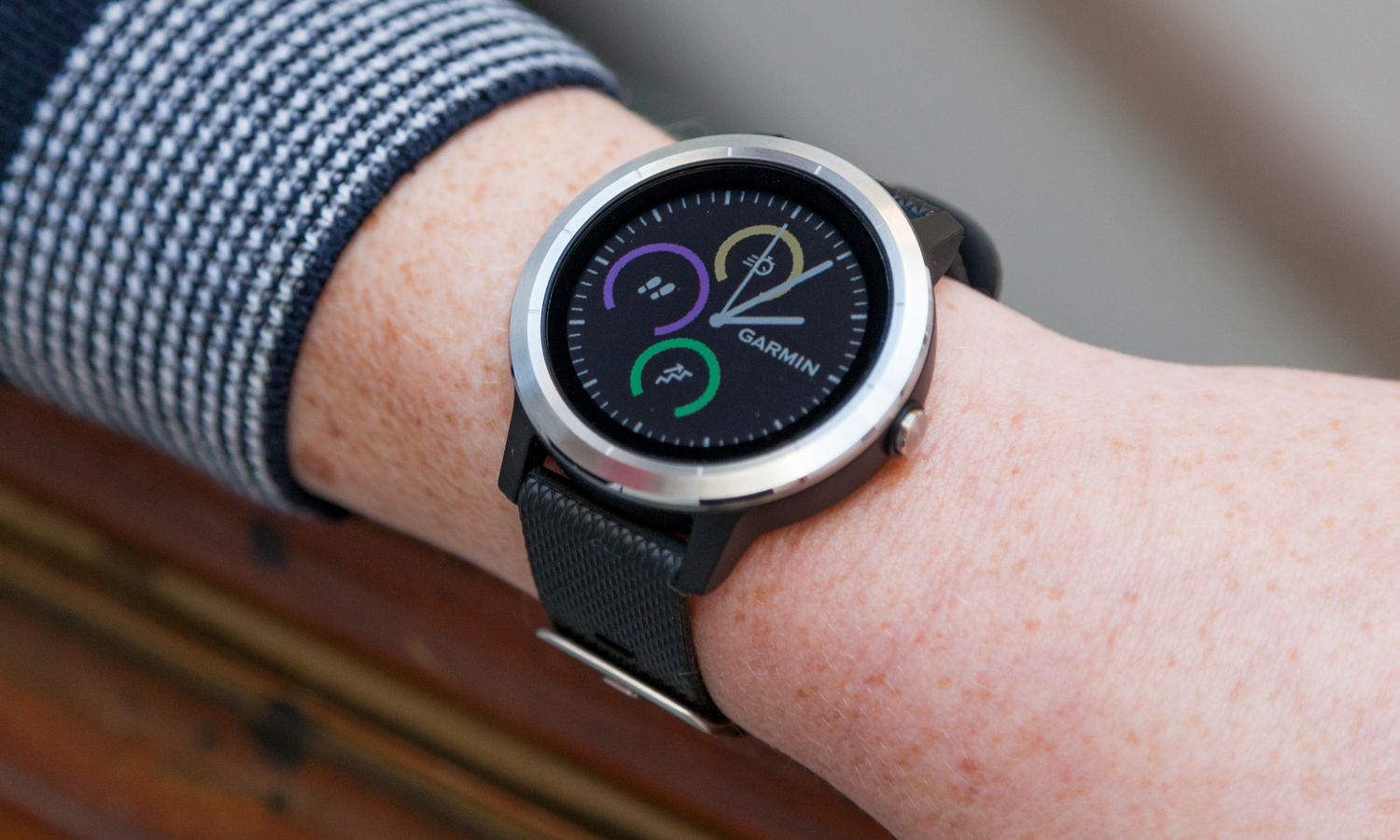
Unlike the Ionic and Apple Watch, the Vivoactive 3 has a round watch face that makes it look more like an analog watch than a fitness tracker or smartwatch. You can install new watch faces in the Garmin Connect app, but the preinstalled one is just fine. It always shows the time, although the display dims when you're not actively using it to conserve battery.
Many smartwatches are bulky or just way too large on my fairly small wrist. This is true of the Ionic, which loses major points for its gigantic square shape. The Vivoactive 3 is big, too, at 43 millimeters, but looks more like a fashionably oversized analog watch than an obvious Bluetooth device or a fitness tracker.

Pressing on the watch face reveals a menu; from here, you can change your watch face, set an alarm, view your stats and change the watch's settings. Swipe up from the watch face to see an overview of your day, check the weather or view your most recent notifications.
I liked that the Vivoactive 3 would show me the entirety of a text message or the full text of an alert. More basic fitness trackers will tell you if you have a text but won't show you the whole thing. However, I wasn't able to respond to messages right from my wrist, which would be useful.
Downsides: Sleep-tracking and no songs
Design and fitness are where Garmin's Vivoactive 3 excels, but it's not a perfect smartwatch. The device gets pretty decent battery life — about three days with GPS and heart rate use — which means you can wear the watch overnight, but the sleep-tracking leaves a lot to be desired. One night, I forgot to wear the watch, leaving it on a table. The next day, the device reported that I had slept solidly for 9 hours. Shouldn't a watch with a heart rate sensor be able to figure out that a human isn't wearing the device, let alone sleeping while doing so?
The watch also lacks onboard music storage and has no integration with music apps. You can control song playback from your smartphone using the Vivoactive 3, but if you leave home with just your smartwatch, you'll have to work out in silence. Both the Ionic and Apple Watch support local song storage, so you can exercise without a phone nearby.
Garmin Pay: Easy to use, if you can
Like Fitbit and Apple, Garmin wants to make its smartwatches capable of doing more on their own. The company introduced a mobile payment system with the Vivoactive 3 called Garmin Pay so you can pay for items on the go by simply holding your watch near a payment terminal. You can tell whether a store or restaurant accepts mobile payments if there's an NFC icon on the checkout stand.
Setting up Garmin Pay in the Garmin Connect smartphone app is fairly easy. You can add payment details manually or by snapping a photo of your physical card, then verify your card with the bank or credit card issuer. The whole process takes just a few minutes.
To actually use Garmin Pay in a store, long press the Vivoactive 3's side button and tap on the wallet icon. You can store multiple cards in your wallet and choose between them by swiping down. You'll see a photo of your card and its last four digits to make sure you pick the right one. I was in a hurry when I used the Vivoactive to pay for a pack of gum at Duane Reade, and using the watch to pay was far faster than digging into my bag to find my wallet and pull out my debit card, especially given how slow chip card transactions have become.
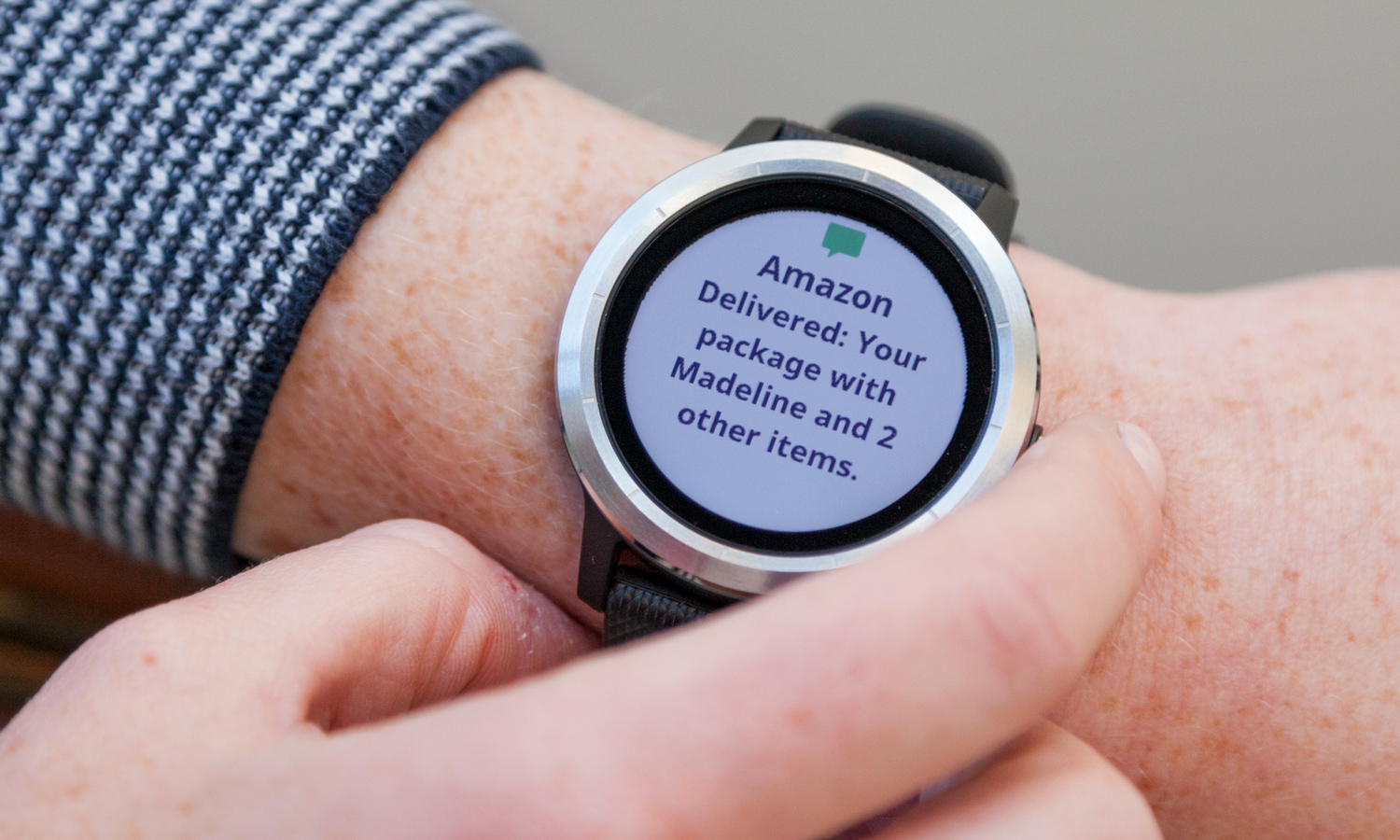
But Garmin Pay doesn't support that many cards at launch, which limits its usefulness. Visa cards from Bank of America, Capital One and U.S. Bank and Mastercards from BECU, Bank of America, Capital One, First Tech Federal Credit Union, Security Service Federal Credit Union, U.S. Bank and VACU are currently supported. More card issuers are being added in the coming months, but the roster is nowhere near as expansive as Apple Pay, which has a lengthy head start.
App Store: Limited to (mostly) fitness
Like Fitbit and Apple, Garmin has an app store for its smartwatch. But while Garmin says its Connect IQ store has more than 1,600 apps, big-time apps unrelated to fitness are few and far between. There are plenty of watch faces and workout apps that you can install from the store in the Garmin Connect app, but they're extremely specific. There are apps for hiking, stretching, setting a stopwatch, skiing, biking and running, but you'll be hard-pressed to find popular smartphone apps that are unrelated to working out. An app that shows your Lyft driver's ETA and another that does the same for Uber are useful, but you still need your phone to hail a ride.
It's a good thing that Garmin is so committed to fitness, but a smartwatch should be more versatile. The Vivoactive 3 would be more useful when you're not exercising if it had more apps that can control smart home devices, deliver news headlines to your wrist and offer more insights into your health using the watch's sensors. It has a few, but not enough. When it comes to fitness, though, Garmin's store has everything you could want — and then some.
Bottom Line
Garmin's Vivoactive 3 is an extremely fitness-focused smartwatch, much more so than the Fitbit Ionic or Apple Watch Series 3. That makes this device perfect for extremely fitness-focused people. The watch also looks better on the wrist than the Fitbit Ionic does.
The Apple Watch Series 3 without LTE is the best smartwatch that most iPhone users — those who aren't serious athletes — can buy. If you don't care so much about style (and don't have an iPhone), you might like the Fitbit Ionic, which also offers powerful fitness-tracking, and is building out an app store with more popular apps that you will recognize. The Ionic also has room for music, which the Vivoactive 3 does not.
But there's no denying that Garmin makes the best fitness trackers you can buy. If the company made the Vivoactive 3 a more well-rounded smartwatch with more popular apps, support for more cards in Garmin Pay and music storage, then the device would be worth every bit of its $300 price tag.
Credit: Tom's Guide
Caitlin is a Senior editor for Gizmodo. She has also worked on Tom's Guide, Macworld, PCWorld and the Las Vegas Review-Journal. When she's not testing out the latest devices, you can find her running around the streets of Los Angeles, putting in morning miles or searching for the best tacos.
